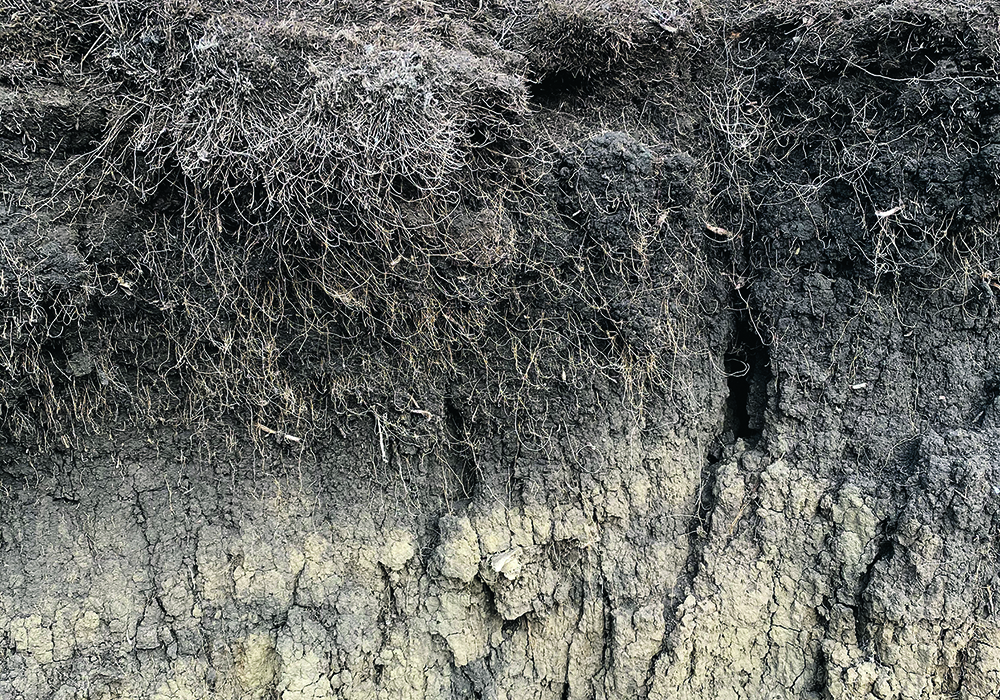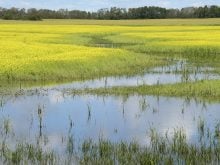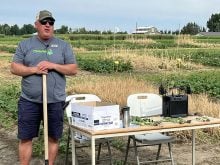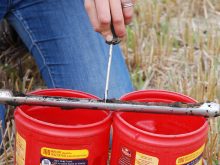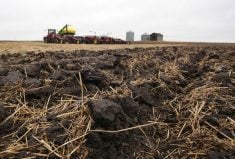Some scientists focus on chemistry, biology and physics, while others look at factors such as the ratio of small to large molecules
Researchers at Cranfield and Nottingham universities in the United Kingdom believe farmers and land managers need to change how they think about, measure and study soil.
“I have been working on soils in various contexts for the last four decades from my early work on the restoration and reclamation of open-cast mines (strip mines) to fundamental work on the effects of profound engineering disturbance on the soil microbial community,” said Jim Harris, professor of environmental technology at Cranfield University in Bedfordshire, U.K.
“It became clear to me that we could use this approach to gauge the condition of soil as a result of management practices across the whole land management spectrum from intensive agriculture through conservation and regenerative approaches, with my particular focus being on ecological restoration. The signals arising are unambiguous and integrative.”
Read Also

Bunge’s crop mix is changing
Bunge has predominantly been a soybean processing firm, but that’s about to change after the merger with Viterra with softseed processing and grain merchandising gaining ground.
Harris said that the problem with the term “soil health” is that it means different things to different people and there actually is no single agreed way to measure the overall health of the system.
“We want to start the conversation about how we move to a holistic picture of soil health assessment, looking at the interconnected elements of this universally important system,” he said. “The clear impacts of substituting ecosystem processes with small molecules have become an acute issue and the effect of the recent price increases in fertilizers, biocides and fuel make alternative soil-centric approaches more attractive.”
He said that some agricultural practices can impact the soil negatively. For instance, tillage can have a significant effect on soil structure and larger organisms, such as earthworms and other ecosystem “engineers” can be eliminated in some systems.
“The use of inorganic fertilizers removes the need for crop plants to form symbioses with mycorrhizal fungi,” he said. “Other substitutes such as biocides act together to reduce the total soil biomass, changing the system from a fungal dominated one to a bacterially dominated one. This ultimately makes soils prone to erosion, leaking nutrients into ground and surface waters, causing pollution, and reducing the availability of birds and mammals to feed on them.”
According to the published report, there remains a lot of discussion as to what soil health really means and how it should be measured. While some scientists continue to support the three major divisions of soil chemistry, biology, and physics, there is less agreement on what the standard soil tests are to measure those.
Other researchers have suggested looking at characteristics such as changes in entropy (a measure of disorder) and the ratio of small to large molecules in soils. Still others argue that soil cannot be measured per se but defined through the lens of land functions such as food quality, water quality, climate mitigation and social values.
According to a media release, the researchers proposed a whole system approach to assess soil health based on a framework covering four measures:
- The natural signs of life characterized by the complexity of organisms in the soil.
- Signs of function being the extent to which soils process materials and perform various transformations.
- Signs of complexity in which soil lifeforms from individuals to populations are intricately connected and interdependent.
- Signs of emergence defined as the extent to which a multi-faceted, biodiverse soil system can respond to, and recover from, stressors.
“This new approach can be applied to all soils and moves us closer to an interdisciplinary understanding of the whole picture of the soil system rather than separately considering the individual pieces of the jigsaw,” said Sacha Mooney, professor in soil physics at the University of Nottingham, who contributed to the study.
By looking at a range of measures, scientists can determine whether the health of the soils is getting better or worse, then look at steps to preserve soil quality.
“We can only tell if a system is performing as it should and if it is intact by measuring its dynamic properties,” said Harris. “For example, how does it respond to a disturbance? Does it come back to a previous condition, how long that that take, and does it contain the same components?”
Soil is a process that Harris said began its life when ground from exposed bedrock went through a process that takes millennia and involves the slow accumulation of organisms, becoming more diverse, complex and rich in function.
“It has been shown that more diverse systems store more carbon, produce a complex, open architecture with many pore spaces, which allow for the storage of water, reduction of flood risk and purification of the water as it passes through the soil.”
The research on the whole approach system of measuring soil health is still in its early stages for land managers and farmers and is currently not often used in the field. However, Harris said that in recent years farmers have been willing to take a bigger picture view of soil dynamics.
“Very much so, especially in the last decade,” he said. “It must be said that many people were well aware of the importance of considering soil holistically and there are many people who were always aware.”
The research was published in the European Journal of Soil Science.

